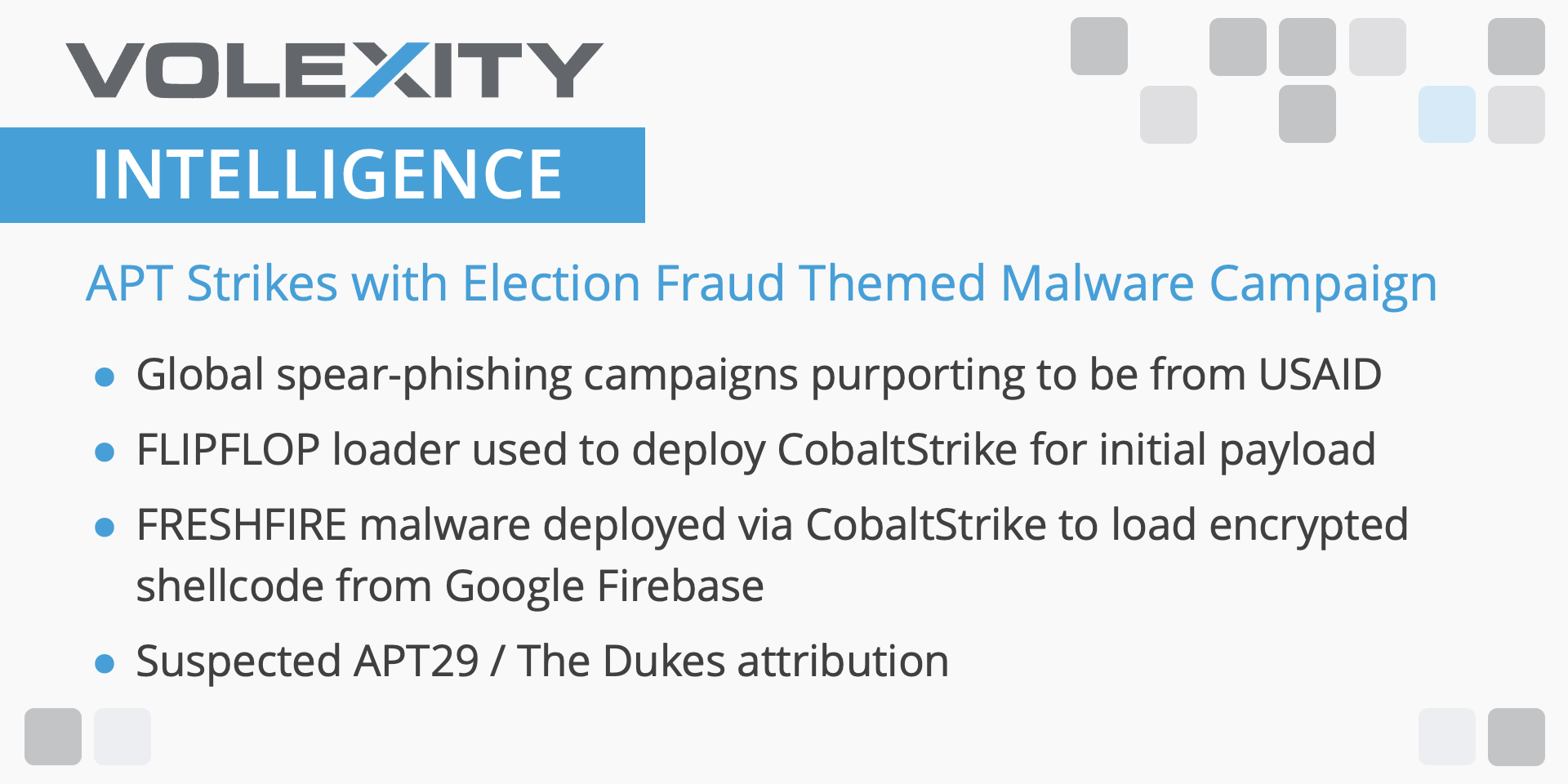Suspicious Execution from a Mounted Device
Identifies when a script interpreter or signed binary is launched via a non-standard working directory. An attacker may use this technique to evade defenses.
Elastic rule (View on GitHub)
1[metadata]
2creation_date = "2021/05/28"
3integration = ["endpoint", "windows"]
4maturity = "production"
5updated_date = "2024/05/21"
6
7[rule]
8author = ["Elastic"]
9description = """
10Identifies when a script interpreter or signed binary is launched via a non-standard working directory. An attacker may
11use this technique to evade defenses.
12"""
13from = "now-9m"
14index = ["winlogbeat-*", "logs-endpoint.events.process-*", "logs-windows.sysmon_operational-*"]
15language = "eql"
16license = "Elastic License v2"
17name = "Suspicious Execution from a Mounted Device"
18references = [
19 "https://www.microsoft.com/security/blog/2021/05/27/new-sophisticated-email-based-attack-from-nobelium/",
20 "https://www.volexity.com/blog/2021/05/27/suspected-apt29-operation-launches-election-fraud-themed-phishing-campaigns/",
21]
22risk_score = 47
23rule_id = "8a1d4831-3ce6-4859-9891-28931fa6101d"
24setup = """## Setup
25
26If enabling an EQL rule on a non-elastic-agent index (such as beats) for versions <8.2,
27events will not define `event.ingested` and default fallback for EQL rules was not added until version 8.2.
28Hence for this rule to work effectively, users will need to add a custom ingest pipeline to populate
29`event.ingested` to @timestamp.
30For more details on adding a custom ingest pipeline refer - https://www.elastic.co/guide/en/fleet/current/data-streams-pipeline-tutorial.html
31"""
32severity = "medium"
33tags = [
34 "Domain: Endpoint",
35 "OS: Windows",
36 "Use Case: Threat Detection",
37 "Tactic: Defense Evasion",
38 "Tactic: Execution",
39 "Data Source: Elastic Defend",
40 "Data Source: Sysmon",
41]
42timestamp_override = "event.ingested"
43type = "eql"
44
45query = '''
46process where host.os.type == "windows" and event.type == "start" and process.executable : "C:\\*" and
47 (process.working_directory : "?:\\" and not process.working_directory: "C:\\") and
48 process.parent.name : "explorer.exe" and
49 process.name : ("rundll32.exe", "mshta.exe", "powershell.exe", "pwsh.exe", "cmd.exe", "regsvr32.exe",
50 "cscript.exe", "wscript.exe")
51'''
52
53
54[[rule.threat]]
55framework = "MITRE ATT&CK"
56[[rule.threat.technique]]
57id = "T1218"
58name = "System Binary Proxy Execution"
59reference = "https://attack.mitre.org/techniques/T1218/"
60[[rule.threat.technique.subtechnique]]
61id = "T1218.005"
62name = "Mshta"
63reference = "https://attack.mitre.org/techniques/T1218/005/"
64
65[[rule.threat.technique.subtechnique]]
66id = "T1218.010"
67name = "Regsvr32"
68reference = "https://attack.mitre.org/techniques/T1218/010/"
69
70[[rule.threat.technique.subtechnique]]
71id = "T1218.011"
72name = "Rundll32"
73reference = "https://attack.mitre.org/techniques/T1218/011/"
74
75
76
77[rule.threat.tactic]
78id = "TA0005"
79name = "Defense Evasion"
80reference = "https://attack.mitre.org/tactics/TA0005/"
81[[rule.threat]]
82framework = "MITRE ATT&CK"
83[[rule.threat.technique]]
84id = "T1059"
85name = "Command and Scripting Interpreter"
86reference = "https://attack.mitre.org/techniques/T1059/"
87[[rule.threat.technique.subtechnique]]
88id = "T1059.001"
89name = "PowerShell"
90reference = "https://attack.mitre.org/techniques/T1059/001/"
91
92[[rule.threat.technique.subtechnique]]
93id = "T1059.003"
94name = "Windows Command Shell"
95reference = "https://attack.mitre.org/techniques/T1059/003/"
96
97
98
99[rule.threat.tactic]
100id = "TA0002"
101name = "Execution"
102reference = "https://attack.mitre.org/tactics/TA0002/"
References
Related rules
- Command Shell Activity Started via RunDLL32
- Conhost Spawned By Suspicious Parent Process
- Microsoft Build Engine Using an Alternate Name
- Network Connection via Registration Utility
- Persistence via Hidden Run Key Detected
